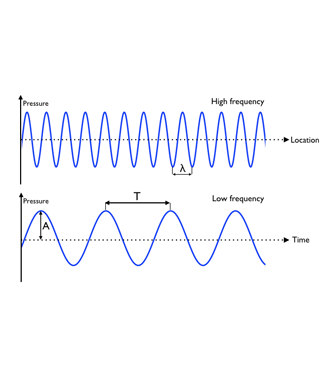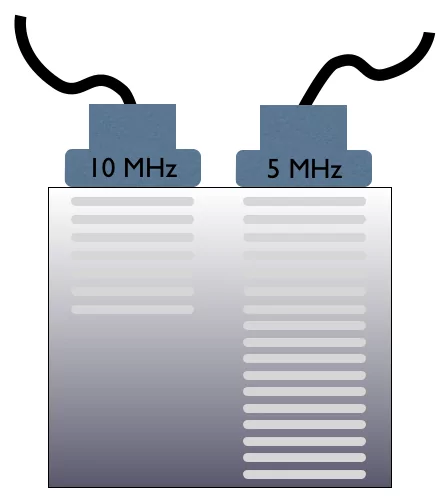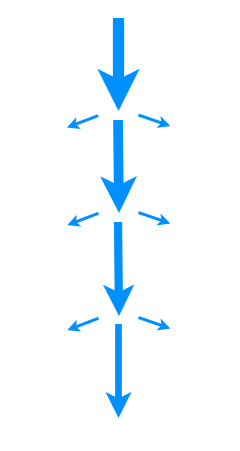A sound wave is a mechanical wave
Mechanical waves require a medium in order to transport their energy from one location to another
They cannot propagate in vacuum
Mechanical waves can be longitudinal or transverse
A sound wave is a longitudinal wave
In a longitudinal wave the oscillating disturbance is parallel to the direction of travel
Sound waves are always longitudinal waves: The air molecules vibrate in the same direction as the sound wave travels and form a series of compressions (high pressure) and rarefactions (low pressure), where the molecules are squeezed together and pulled apart respectively





